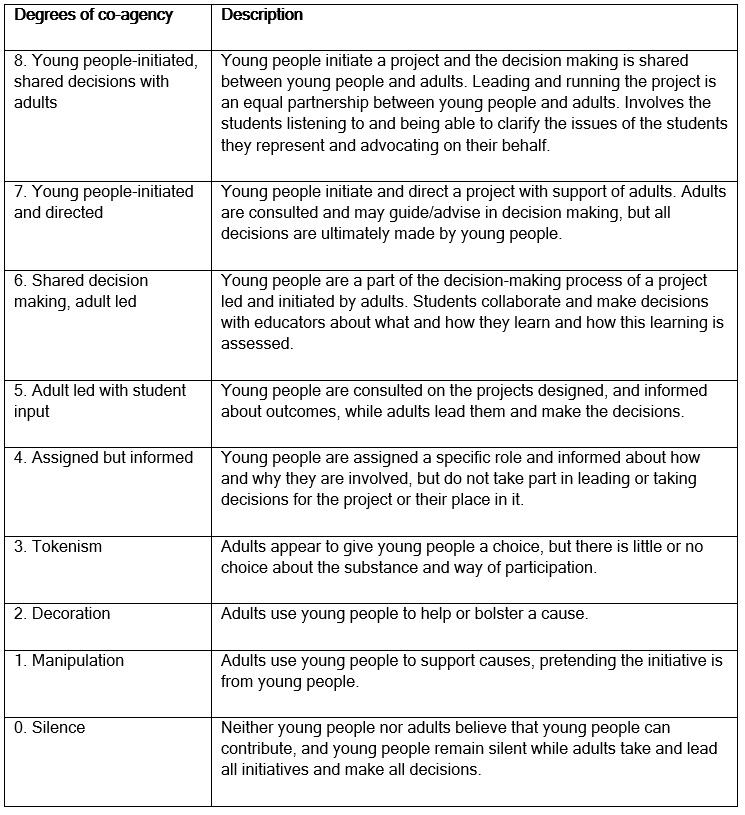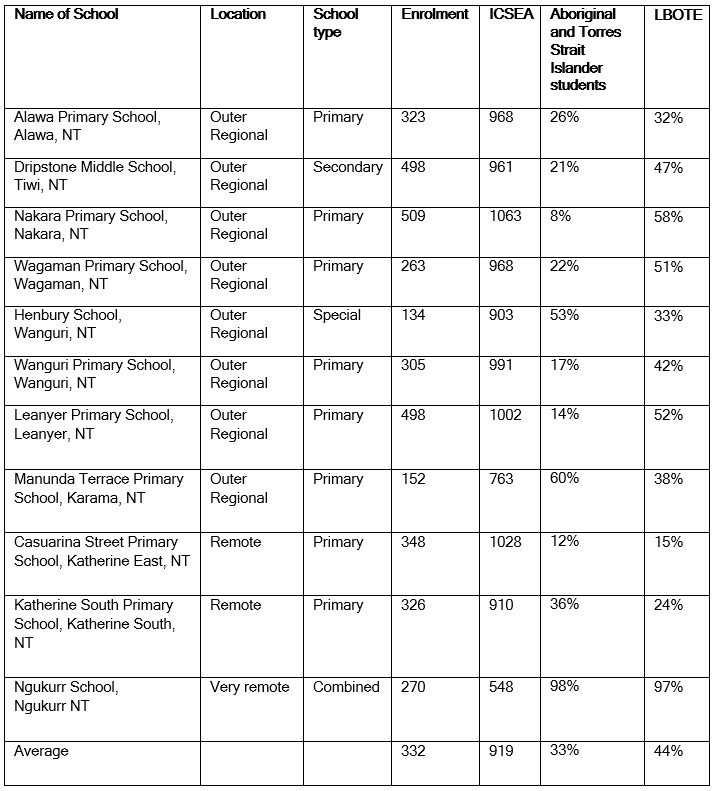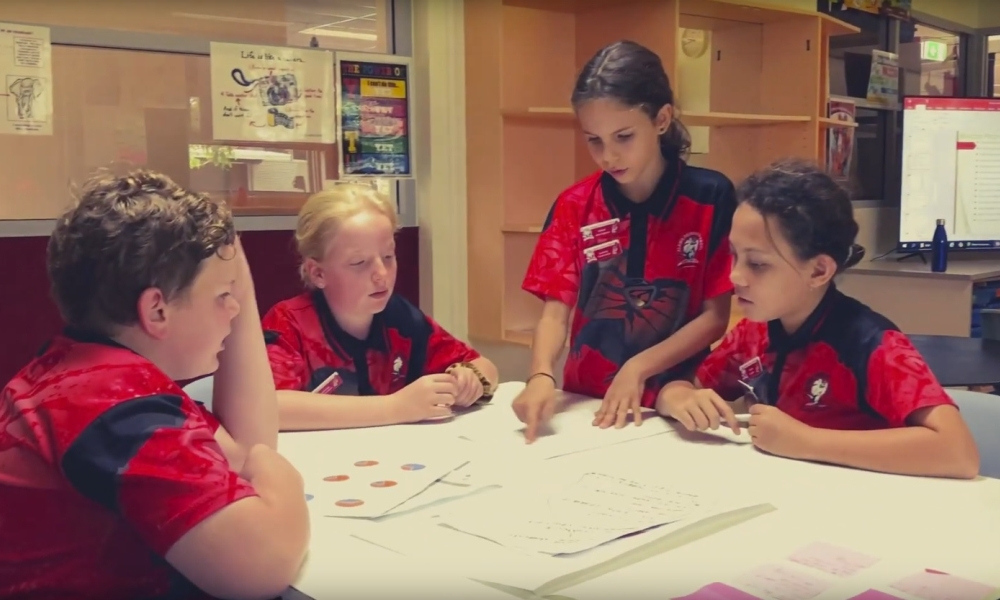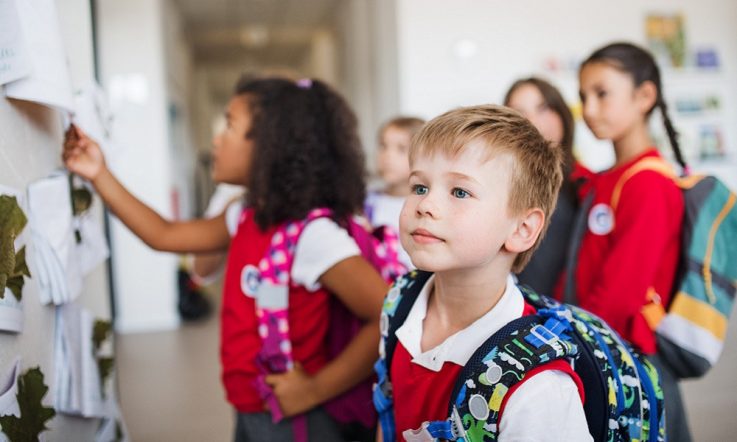Students can play an important part in co-decision making within a school that can impact not only their learning, but that of other learners also. In the Northern Territory, students have been leading change projects in their schools for the past four years.
The Northern Territory Learning Commission (NTLC) is a collaborative initiative providing an opportunity for students to grow their agency through analysing their school's data, co-planning and co-implementing a project with the goal of improving learning at their school.
Degrees of student agency
Students can be partners in their learning (Gonski et al., 2018) through co-leading change in their school with fellow students, leaders and teachers (OECD, 2019; Vaughan et al., 2019). Student agency can be defined as: “…the capacity to set a goal, reflect and act responsibly to effect change. It is about acting rather than being acted upon; shaping rather than being shaped; and making responsible decisions and choices rather than accepting those determined by others.” (OECD, 2019, p.2)
Agency can be thought of occurring in degrees that range from silence to that of shared decision making with adults (Hart, 1992; OECD, 2019; State of Victoria (Department of Education and Training), 2019). There are considered to be eight levels of young people's participation in activities and decision making, as outlined in Table 1.

Table 1. Degrees of co-agency, adapted from (Hart, 1992; OECD, 2019, p.11; State of Victoria (Department of Education and Training), 2019).
Working with regional and remote schools
The NTLC has been working with regional and remote schools in the Northern Territory since 2016 (Ho et al., 2018; Vaughan et al., 2017) to foster student agency. Since 2017, it has been working with Evidence for Learning and Summer Howarth, Founder and Learning Designer at The Eventful Learning Co., in facilitating face-to-face events with students working at level eight of co-agency. The NTLC has grown from the involvement of seven schools in 2016 to 11 schools in 2020. Within the projects: “The student, teacher and leader commissioners meet as part of the Learning Commission to discuss, analyse and set direction for the school year informed by whole school data sets. Based on their school data student, teacher and school leader commissioners set goals, design evidence gathering processes, sample sizes for inclusion and identify how they will measure the impact of their school-based research.” (Vaughan et al., 2019, p.33)
The students from the NTLC span a range of contexts, from outer regional, remote, and very remote schools, as outlined in Table 2. The Index of Community Socio-Educational Advantage (ICSEA) of these schools has an average of 919, which is below the mean of 1000 for Australia, with a range from 584 to 1063. The schools include primary, secondary, special, and combined schools, with the percentage of Aboriginal and Torres Strait Islander students ranging from 8 to 98 per cent. The percentage of students with Language Backgrounds other than English (LBOTE) ranges from 15 to 97 per cent across the schools. These schools can be considered to be working with a range of students, including those surrounded by disadvantage and those with additional learning needs.

Table 2: Demographics of the schools involved in the NTLC in 2020.
An example of student-led change
Growing student agency can help individuals overcome adversity (Talreja, 2017). Students who come from backgrounds surrounded by disadvantage can have a reduced sense of agency (Brooks-Gunn & Duncan, 1997). The students at Alawa Primary in Darwin come from a context of an ICSEA below 1000, with 26 per cent Aboriginal and/or Torres Strait Islander students and 32 per cent LBOTE.
Alawa has been involved with the NTLC since 2018. The NTLC involves student commissioners, (five to 11 students selected from each school), teacher commissioners (two from each school) and the Principal commissioner, who work together in co-planning and co-implementing a project focused on learning. In 2019, the student commissioners working alongside their Principal Sandy Cartwright and teacher commissioners identified reading across the school as an area for focus, based on data showing student achievement was improving much faster for Maths than for reading. They investigated through surveys, classroom observations, interviews and by further reviewing available data. Their recommendations led to ‘Connecting Reading and Writing' being one of the four top priorities in the School Improvement Plan for 2020-23. Specifically, the development of a whole school approach to the teaching of reading. This year the school is focused on how, why, and how best to incorporate critical and creative thinking as part of the Australian Curriculum General Capabilities.
Adapting to COVID-19 restrictions
In response to the COVID-19 pandemic, the facilitation of the NTLC has been moved to an online environment. This work has been led by Summer Howarth, with support from partners in the Northern Territory Government, Evidence for Learning and Pivot. Moving from face-to-face environments to virtual support for 11 schools has been a significant undertaking. The online support includes asynchronous elements (the creation of explicit instruction videos and scaffolds for planning the projects) that can be accessed in a resource hub.
The NTLC for 2020 was planning to involve seven face-to-face events. The first two-day workshop in February collaboratively facilitated in both Katherine and Darwin went ahead as planned. As the boarders closed in mid-March, the event involving all students, principals and teacher commissioners analysing their data was moved to an online format. Site visits to each of the schools were normally led by John Cleary and Dr Tanya Vaughan since 2018, this was also transformed into a series of two-hour online workshops in late May of 2020. The online versions of these events comprised both whole group instructional elements, followed by supporting individual schools in virtual break out rooms. Differentiated instruction was available for the schools, with a choice of them electing to join workshops dependent on the stage of their project as aligned with the Northern Territory inquiry cycle, and forging ahead for those that had well developed projects.
The benefit of this type of online instruction has been the increased ability of schools to share their work and thus share ideas more freely as some of the projects have a focus on common goals, such as improving feedback, meta-cognition and writing.
References
Brooks-Gunn, J., & Duncan, G. (1997). The Effects of Poverty on Children. The Future of Children, 7(2), 55-71. doi:10.2307/1602387
Gonski, D., Arcus, T., Boston, K., Gould, V., Johnson, W., O'Brien, L., & Roberts, M. (2018). Through growth to achievement: Report of the review to achieve educational excellence in Australian schools. Canberra: Commonwealth of Australia.
Hart, R. A. (1992). Children's participation: From tokenism to citizenship. Innocenti Essays No.4. https://www.unicef-irc.org/publications/100-childrens-participation-from-tokenism-to-citizenship.html
Ho, P., Cleary, J., & Vaughan, T. (2018, August 8). Change leading to improvement. Teacher Magazine. https://www.teachermagazine.com/articles/change-leading-to-improvement
OECD. (2019). Student Agency for 2030. http://www.oecd.org/education/2030-project/teaching-and-learning/learning/student-agency/Student_Agency_for_2030_concept_note.pdf (2.9 MB)
State of Victoria (Department of Education and Training). (2019). Amplify: Empowering students through voice, agency and leadership. https://www.education.vic.gov.au/school/teachers/teachingresources/practice/improve/Pages/amplify.aspx
Talreja, V. (2017, October 13). Student Agency: The Impact of Adversity. In Education 2030 - Conceptual learning framework: Background papers. OECD. https://www.oecd.org/education/2030-project/contact/Conceptual_learning_framework_Conceptual_papers.pdf
Vaughan, T., Cleary, J., & Butler, H. (2017, October 5). Collaboration and flow in Katherine. Evidence for Learning. https://www.evidenceforlearning.org.au/news/collaboration-and-flow-in-katherine
Vaughan, T., Cleary, J., & Butler, H. (2019). Students as partners in learning in rural and remote settings. Australian Educational Leader, 41(4), 33.
Take a look at the eight degrees of co-agency as outlined in Table 1. Which description best fits the situation in your own school? How could you work to improve the degree of co-agency to a level eight? Who would need to be involved in this work?



